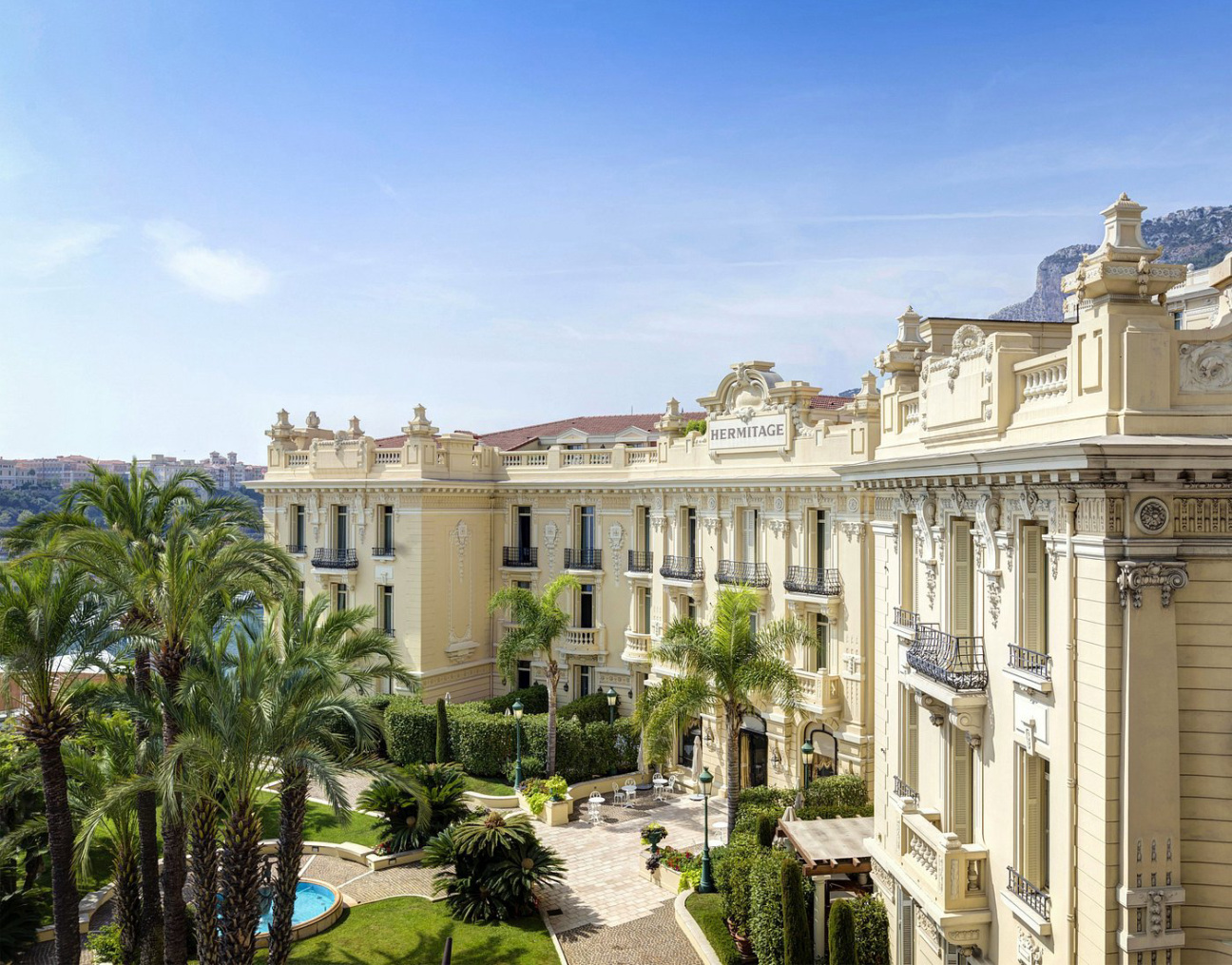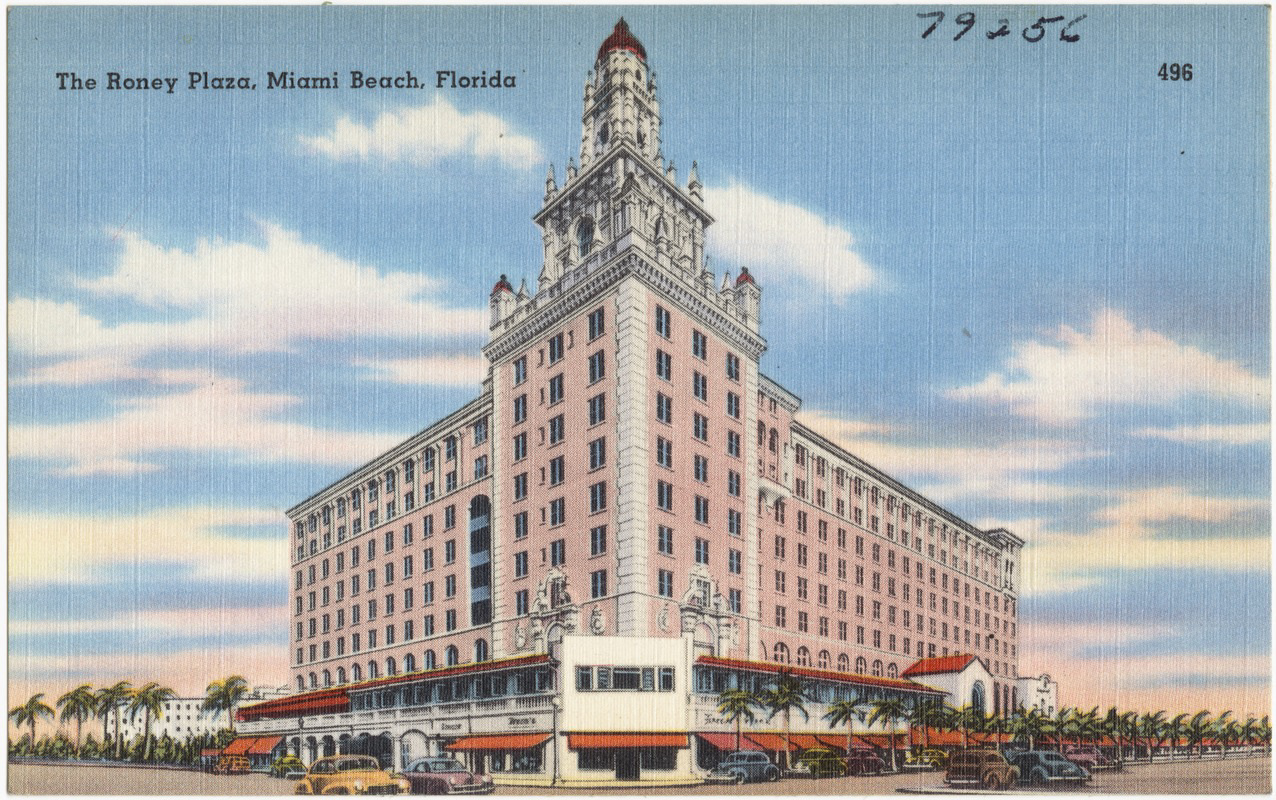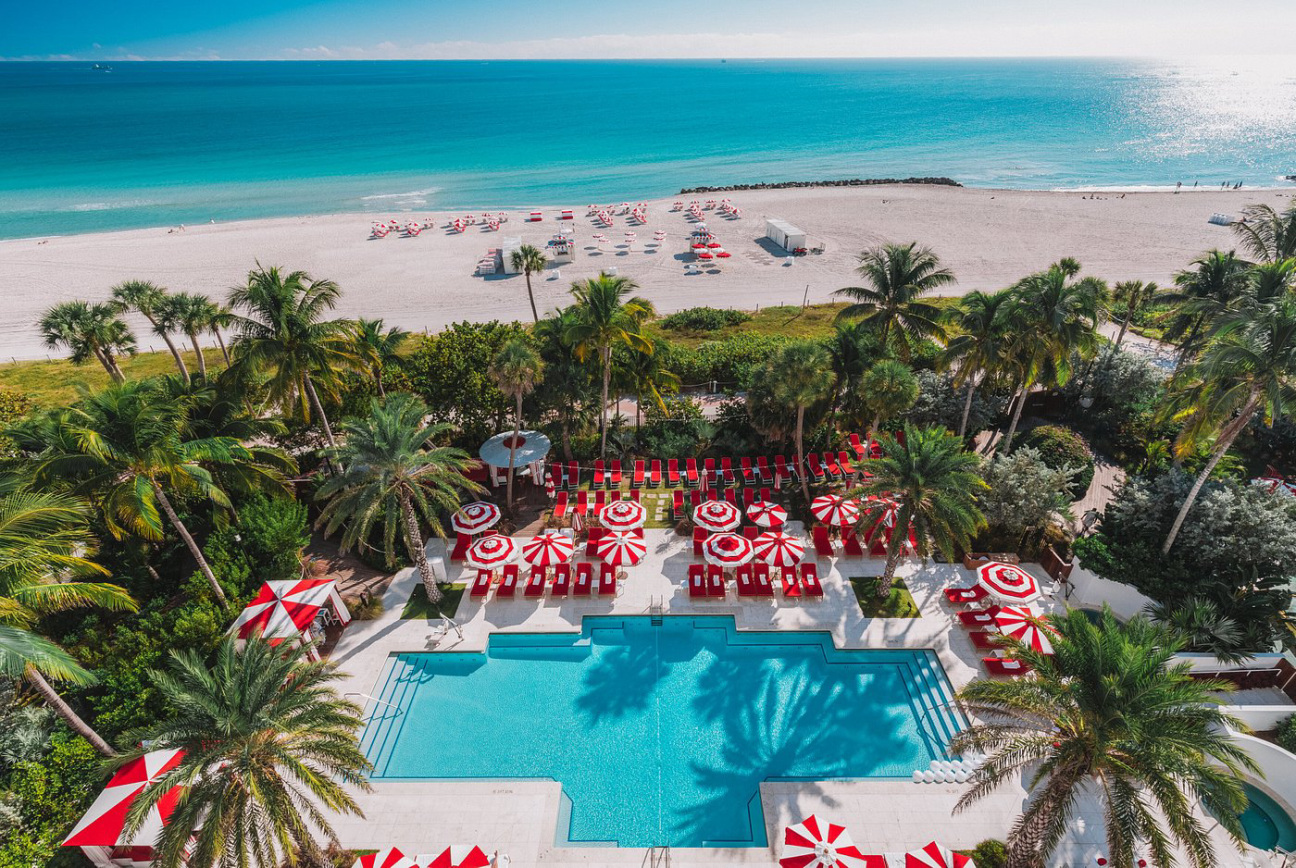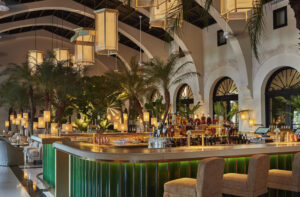
Welcome to Wayfinding, a new series for the modern flaneur. Join CULTURED as we travel both near and far to unearth inspiration around every corner.
High fliers visiting Monaco today typically gravitate towards the waterfront principality’s most legendary five-star properties, many of which were built in the late 1800s in line with the birth of the city’s yacht scene and the simultaneous blossoming of elite tourism. Across the Atlantic, beachgoers in Miami are drawn towards the oceanside icons pairing high-design with Riviera-inspired coastal living stemming from the city’s own heritage in hospitality. On both sides of the globe, these two distinct coastal locales share a sense of cultural kinship and a historic period of architectural evolution.

The palatial Hôtel de Paris Monte-Carlo opened in 1864 as the vision of the French entrepreneur François Blanc, who was also behind the creation of the Casino de Monte-Carlo, as a part of the city’s development. The opulent venues—along with the Opéra de Monte-Carlo and several other hotels and restaurants—are a part of the Société des Bains de Mer, which was established by Charles III, Prince of Monaco in 1863 and, has been responsible for making Monaco the destination it is today for over the past century and a half. Nearby is the neoclassical-style Hôtel Métropole designed by the Danish architect Hans-Georg Tersling in 1889. The Belle Époque Hôtel Hermitage Monte-Carlo, which was built shortly after in the 1890s by architect Nicolas Marquet and engineer Gustave Eiffel sits in a prominent position overlooking Monaco Harbour. These palatial properties were joined by the waterfront Monte-Carlo Beach hotel designed by the French architect Roger Séassal in 1929 with its Roquebrune-Cap-Martin location providing a more serene setting and the ideal spot for the period’s then-new wave of luxury travelers looking to explore the French Riviera.

The Fin de siècle period was also a time of crucial growth in Miami. It signified the beginning of the coastline’s transformation into a yachting destination. The boating scene’s subsequent boom happened alongside the development of the city’s cultural and affluent lifestyle offering—especially its places to stay. Hotel Miami made its debut in 1897 as did the city’s first luxury resort, The Royal Palm, which was conceived by industrialist Henry Flagler, who opened access to Miami via railroad in 1896. These iconic establishments were followed in the early 1900s with the arrival of landmark properties like the 1917-opened McCallister Hotel, Miami’s first skyscraper at 10 storeys in height, and the 1925-debuted Roney Plaza Hotel, which is credited with being the city’s first grand beachfront resort.

In the decades since, both Miami and Monaco have continued to expand, and their ever-evolving hospitality offering has continued to set these two places apart with their grandest hotels drawing the global jet set from Hollywood stars to royalty. In Monaco, the contemporary hotel scene boasts properties such as the Fairmont Monte Carlo, the Riviera Marriott Hotel La Porte de Monaco, and the 2005-built Monte Carlo Bay Hotel & Resort. More recently, some of the principality’s grande dames have undergone their own evolution, with Hôtel de Paris Monte-Carlo garnering particular attention for its 2019-completed $280m renovation. Meanwhile in Miami, contemporary icons have emerged from a growing beachfront hotel scene that fuses Miami style with a Côte d’Azur vibe. Properties like Faena Hotel Miami Beach, Fisher Island Club, Four Seasons at the Surf Club, and The Miami beach EDITION all bring a coastal setting together with modern opulence and a focus on design—in some cases, with a distinctly Mediterranean influence. The pull of the Côte d’Azur, it seems, is everywhere.










 in your life?
in your life?

